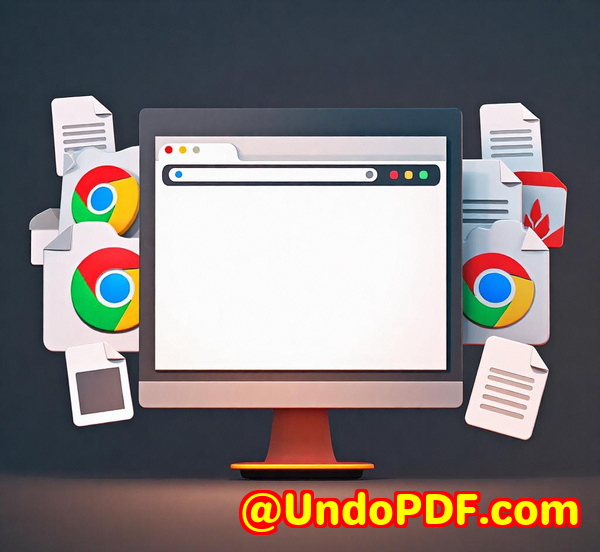imPDF vs Adobe vs Foxit Which PDF API Is Best for Enterprise Document Automation
imPDF vs Adobe vs Foxit: Which PDF API Is Best for Enterprise Document Automation
Meta Description
Tired of bloated PDF tools slowing you down? Here’s how I picked the best PDF API for real-world enterprise automation projects.

Every team I’ve worked with hit the same wall: automating PDFs was always a nightmare.
You start building a systemmaybe it’s for HR contracts, invoices, client reports, scanned archivesand right when you’re about to roll it out, the PDF part falls apart.
Adobe’s API? Clunky, overkill, and a pain to scale.
Foxit? Decent UI, but limited dev-focused flexibility.
imPDF? Never heard of it until a dev friend dropped it in a Slack channel.
That tip changed everything for us.
We were knee-deep in automating an internal legal ops platformtons of scanned PDFs, form merges, contract redactions, and conversions back and forth. My goal was simple: find a PDF API that didn’t slow us down or drain the budget.
I tested Adobe, Foxit, and then gave imPDF PDF REST APIs for Developers a shot. No fluff. Just results. Let’s get into it.
What is imPDF? And why should developers even care?
You don’t need another UI tool. You need automation. You need integration. You need an API that doesn’t fight back.
imPDF is built exactly for thatPDF REST APIs for developers who want speed, control, and flexibility. Think of it like the Swiss Army knife of PDF manipulation. The moment I started testing, I could tell: this wasn’t just another wrapper on top of someone else’s tech. It’s fast, scalable, and ridiculously complete.
The APIs include:
-
PDF to Word, Excel, PPT, HTML
-
Word/Image/HTML to PDF
-
Extract tables, text, forms
-
Merge/split, compress, rotate, redact
-
OCR, watermark, secure, and sign
-
Web-to-PDF, AI image remover, even PDF DRM security
Literally everything.
Here’s how it stacked up in the real world
We ran three internal benchmarks for document automation:
1. Contract Redaction & Form Fill at Scale
We used to manually redact client names and fill custom fields for 100+ NDAs a day.
With Adobe: slow processing, limited redaction granularity.
With Foxit: good UI, but batch handling via API was shaky.
With imPDF: nailed it.
Their Redact PDF REST API plus PDF Form Filler API allowed us to batch-redact keywords, inject form data using a JSON payload, and return ready-to-send contracts in one pipeline.
Saved us 4 hours a day. Minimum.
2. PDF to Table Extraction for Finance Reports
Every month, accounting sends us 50+ bank PDFs. We need those tables in Excel fast.
Adobe had table detectionbut honestly, it choked on weird formats.
Foxit did okay, but parsing errors were frequent.
imPDF’s PDF to Table REST API blew me away.
-
Smart detection of headers
-
Clean formatting
-
API returns structured JSON or CSV
It even handled rotated text and embedded images with OCR fallback. Gold.
3. Web-to-PDF Snapshots for Compliance
Another quirky task: take weekly PDF snapshots of legal policies on about 25 public websites. Adobe doesn’t even support this natively. Foxit’s approach required browser automation.
With imPDF? Just a simple call to the Web to PDF REST API.
Add URL, set page size and quality, done. Fast and clean PDFs, all auto-saved in our S3 bucket via webhook integration.
Why I Chose imPDF Over Adobe and Foxit
Let’s be brutally honest here. Adobe is huge, but it’s like hiring an entire orchestra to play a ringtone. The dev experience? Bloated. Authentication setups? Overly complex. Costs? Premium, even for basic use.
Foxit does a decent job for teams that want UI-first tools with light scripting. But when you’re building back-end automations or need real API firepower, it doesn’t compete.
Here’s what sold me on imPDF:
Developer-first experience
-
Super simple REST APIs
-
Clear docs
-
Postman collection ready
-
Code samples in Python, Node.js, PHP, C#
API Lab for Testing Before Writing Code
-
Drop a PDF
-
Click options
-
Preview output instantly
-
Copy generated code snippet
Perfect for prototyping or demos.
Huge toolsetno nickel-and-diming
-
One account, full API access
-
No separate modules or “enterprise licensing” nonsense
Fast Support
I hit up their support when a file with weird UTF-8 headers failed. They responded in under 30 minutes. Try getting that with Adobe.
Who Should Use imPDF?
Honestly, if you’re building anything that touches documents, you probably should.
But here’s where it really shines:
-
Legal teams handling scanned contracts, redaction, and form generation
-
Finance & accounting pulling tables and running OCR on reports
-
Enterprise dev teams automating document workflows at scale
-
SaaS platforms offering document generation, signature flows, or conversions
-
Government agencies dealing with secure document workflows, redaction, PDF/A compliance
Whether it’s five files a day or five thousand, imPDF handles the grind.
Real Talk: What Problems Does This Solve?
-
Stops your dev team wasting time building in-house converters
-
Eliminates clunky manual workflows for PDF forms, redaction, and conversions
-
Gives you control over every document without opening Acrobat
-
Works in any stack: Python, Node, PHP, C#, even low-code tools
My Recommendation?
If you’re serious about enterprise PDF automation, don’t waste another week wrestling with Adobe or Foxit.
imPDF just works. It’s built for developers.
It saved me time, cut costs, and sped up every doc-related feature in our system.
Start your free trial now and test it for yourself:
Custom Development Services by imPDF.com Inc.
Need something beyond the APIs?
imPDF.com Inc. provides custom development across PDF, print, OCR, and document workflows. Whether it’s building a virtual PDF printer, setting up system-wide PDF monitoring, or integrating DRM-secure workflowsthey’ve got you.
They work across:
-
Windows, Linux, macOS, iOS, Android
-
Python, PHP, JavaScript, C#, .NET, C/C++, HTML5
-
Virtual printer drivers for PDF/EMF/Image output
-
Print job interception, PDF/A conversion, OCR-based workflows
-
Document processing (PDF, PCL, PostScript, TIFF, Office, etc.)
-
Barcode tools, form generators, layout analyzers
-
PDF security, watermarking, font embedding, and more
Contact the dev team directly here:
FAQs
Q1: Is imPDF secure enough for sensitive document workflows?
Yes. imPDF supports PDF encryption, redaction, digital signing, and full DRM security APIs. It’s used in legal, government, and healthcare projects.
Q2: Can I integrate imPDF into my Node.js/Python app?
Absolutely. It’s REST-based, so any language that can make HTTP calls works. They provide code samples and a full Postman collection.
Q3: How does imPDF pricing work?
You pay based on API usage. No bloated licensing fees or forced upgrades. There’s also a generous free trial to get started.
Q4: What if I need to convert thousands of files at once?
No problem. imPDF supports bulk processing and can be integrated into batch systems using webhooks or polling methods.
Q5: Is there a way to test API features without writing code?
Yes! The API Lab lets you test features and generate code before touching your editor. Super handy.
Tags / Keywords
PDF REST API, Document Automation, PDF Redaction API, Extract Tables from PDF, PDF to Excel Automation, Enterprise PDF Tools, imPDF API Review, Legal Document Processing, PDF to Word API, PDF Workflow for Developers



